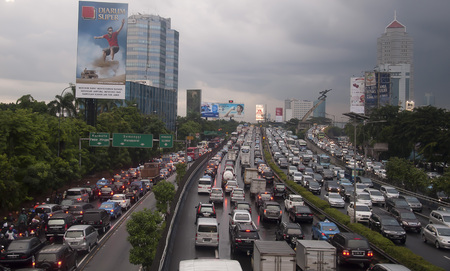20 September, 2017
On 7 August 2017, the Ministry of Energy and Mineral Resources of the Republic of Indonesia (“MEMR ”) enacted Regulation No. 50 of 2017 (“Regulation 50/2017 ”) governing the tariff framework applicable for renewable energy projects in Indonesia. Regulation 50/2017, which took effect on 8 August 2017, revokes the previous MEMR Regulations No. 12 of 2017 (“Regulation 12/2017 ”) and No. 43 of 2017.
Key terms of the new regulation
We set out the key differences between the regulations and discuss the main issues under Regulation 50/2017.
1. Scope of application
Regulation 50/2017 sets out the applicable tariff framework for the following types of renewable energy:
(a) solar photovoltaics (PV);
(b) wind;
(c) hydro;
(d) biomass;
(e) biogas;
(f) municipal solid waste;
(g) geothermal; and
(h) wave and tidal.
This scope of application is wider than Regulation 12/2017 which did not capture wave and tidal energy projects.
2. Tariff framework
As with Regulation 12/2017, Regulation 50/2017 utilises the average electricity generation base cost (excluding electricity distribution cost) (Biaya Pokok Penyediaan Pembangkitan, “BPP”) as a point of reference in determining the applicable tariff. The local grid BPP is referred to as “Local BPP” and the national BPP is referred to as “National BPP” and the applicable tariff framework for each type of renewable energy project will depend on whether the Local BPP is less than, equal to or greater than National BPP. Appendix 1 sets out the tariff framework and method of procurement for each type of renewable energy under the different regulations.
MEMR has issued a regulation on the mechanism for setting PLN’s BPP for particular procurement, both locally and nationally. The BPP will be set annually by MEMR on the basis of a proposal from PLN which references the BPP from the previous year (i.e. the BPP for 2016 will be applied for procurement from April 2017 to March 2018). This regulation does not set out a formula or components for calculating the BPP – it merely stipulates numbers – and there is no BPP for particular energy sources. This means renewables energy needs to compete with other cheaper electricity sources, such as coal, because pricing will be linked to the BPP which includes all energy sources, rather than having a specific feed-in tariff for renewable energy.
MEMR has separately set the actual BPP of PLN for 2016, which is valid from 1 April 2017 until 30 March 2018, that will be used as the reference in procurement documents during that period. The national BPP is set at USc7.39/kWh, and there are separate local BPP for different regions in Indonesia. If there is any region that does not have a BPP, then the BPP will refer to the highest BPP stipulated in the Minister’s decision.
BPP figures are denominated in USD and IDR which leaves open the possibility to denominate the tariff in the PPA in USD, albeit that the payment would need to be cleared in IDR. However, from our recent experience, PLN will often propose the tariff for renewables projects (particularly smaller scale renewables projects) be denominated in IDR. For recent large-scale power projects, PLN has accommodated sponsor and lender concerns on currency risk inherent in this arrangement by entering into a tripartite converting agreement with a local bank under which PLN will guarantee the USD amount on conversion back from IDR. However, we expect that PLN may be reluctant to offer this concession for the smaller-scale renewables developments, and accordingly residual currency risks will need to be assessed and managed carefully by the sponsors.
Local BPP > National BPP
Regulation 50/2017 states that where Local BPP exceeds National BPP, the maximum tariff shall be 85% of Local BPP (solar, wind, biomass, biogas and wind & tidal) or 100% of Local BPP (hydro, municipal solid waste and geothermal). This is generally consistent with the approach in Regulation 12/2017, although we refer you to Appendix 1 for a detailed comparison.
Whilst the Government’s desire to adopt a pricing structure for renewables that assists in reducing the existing average cost of generation (and in turn reducing the subsidy dependency of PLN) is laudable, it remains debatable as to whether benchmarking renewables against the cost of generation from other energy sources at a particular point in time is a legitimate comparison. In particular, this methodology, in comparing the cost of procuring renewables generation against (for example) the cost of procuring coal-fired power generation at a point in time, arguably does not take proper account of either fluctuations in fossil fuel prices (which are passed through to PLN and included in the cost of generation) over time or indirect environmental costs of continued reliance on fossil fuels in the fuel mix.
Local BPP ≤ National BPP
A key change introduced by Regulation 50/2017 relates to the situation where Local BPP is less than or equal to National BPP. In this case, the tariff applicable (for all types of renewable energy project as governed by Regulation 50/2017) shall be as agreed by the developer and PLN. The regulation does not stipulate a maximum limit which means that the developers will be free to negotiate with PLN a price that is above Local BPP price based on the economics and forecast of the project. Whilst this new feature of Regulation 50/2017 is clearly a positive in providing greater flexibility in this case, it should be recognised that as a practical matter PLN is likely to remain focused on reducing its average cost of generation.
3. Price escalation
Both Regulation 12/2017 and Regulation 50/2017 are silent on whether the tariff may be subject to escalation in the future. However, escalation is governed by other regulations specific to each type of renewal energy project.
Since Regulation 50/2017 states that existing regulations shall remain in force and effect provided that it does not conflict with this regulation, we will have to look to existing regulations to determine whether or not price escalation is permitted.
4. Methods of procurement
There were three different methods of procurement applicable to the different renewable energy projects in Regulation 12/2017: (1) tender process based on capacity quotas (for solar PV and wind), (2) reference price (hydro, biomass ≤10MW, biogas ≤10MW, municipal solid waste and geothermal) and (3) direct selection (hydro, biomass >10MW and biogas >10MW). Regulation 12/2017 did not provide details of how the different methods of procurement were to be implemented.
Regulation 50/2017 only stipulates the direct selection method (solar PV, wind, hydro, biomass, biogas and wave & tidal) or otherwise states that procurement is to be made in accordance with laws and regulations (municipal solid waste and geothermal). The regulation does not provide details of what is involved in a direct selection process, although it does state that PLN must prepare and publish technical guidelines on the implementation of direct selection method of procurement. Typically, a direct selection process in the power sector involves a competitive tender process involving a minimum of two bidders.
5. BOOT scheme
Consistent with the new MEMR Regulation No. 49 of 2017 which sets out the basic provisions to feature in PPAs, Regulation 50/2017 requires the PPAs (except in relation to municipal solid waste) to be entered into pursuant to a Build, Own, Operate and Transfer (“BOOT ”) scheme.
This means that that upon the expiry of the PPA, the project must be transferred to PLN for a nominal amount. Whilst the BOOT scheme is common for most power projects, some hydro and geothermal projects operate on the build, own and operate (“BOO”) scheme. The BOO scheme allows for the developer to retain ownership of the project and seek for an extension in the PPA if the power plant is still operating. A mandatory BOOT scheme means that the developer will not be able to seek for an extension under the PPA (which is subject to the maximum term of 30 years in any case) and take advantage of the remaining design life of the power plant once the PPA expires.
6. Grandfathering
The pricing regime under this Regulation 50/2017 will not apply where:
- developers have signed a PPA with PLN prior to the regulation coming into effect – in such cases the pricing regime under the signed PPA will apply;
- developers have been awarded with the geothermal concession but have not signed a PPA with PLN or any SOE has been assigned as a geothermal developer – in such cases the tariff used in the bid by such developer and the previous regulations will apply;
- holders of the geothermal concession have signed a sale and purchase agreement for steam or a PPA which is in the process of verification by the financial and development supervision agency – in such cases the previous regulations will apply; and
- developers have obtained tariff approval from the MEMR under Regulation 12/2017 however have not signed a PPA with PLN – in such cases the developer shall comply with the tariff as determined under the previous Regulation 12/2017.
However, similar to Regulation 12/2017, the parties shall have the right to elect to follow the pricing regime under Regulation 50/2017.
The pricing regime under Regulation 50/2017 will however apply to developers who have been designated as project developers for a hydro, biomass, biogas or municipal waste power project but have not entered into a PPA with PLN.
Any tender process for capacity quota conducted prior to this new regulation becoming effective must also comply with the price regime under Regulation 50/2017.
7. Conflicts with other regulations
As mentioned above, existing regulations shall remain in force and effect provided that they do not conflict with this new regulation. Regulation 50/2017 does specifically note that Regulation 12/2017 is revoked.
8. <10MW plant “must run”
Consistent with Regulation 12/2017, Regulation 50/2017 states that projects with a capacity of less than 10MW must run which means that PLN must purchase all the power produced by such project. This continues to be seen as a positive outcome in the market as previous regulations have been criticised for their lack of clarity surrounding small scale renewable energy projects.
9. Approval by Minister
Regulation 50/2017 states that the tariff for the purchase of electricity from renewable energy projects as listed in the regulation must be approved by the Minister.
Appendix 1
Please click on the table to enlarge.
Please click on the table to enlarge.
For further information, please contact:
Widyawan, Senior Partner, Widyawan & Partners
widyawan@linklaters.com

.jpg)







